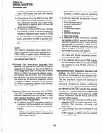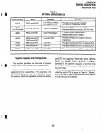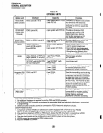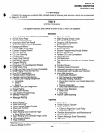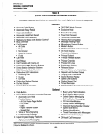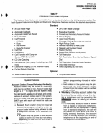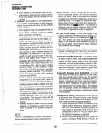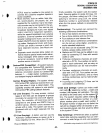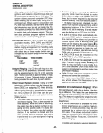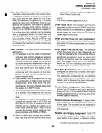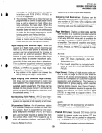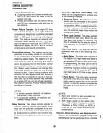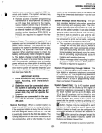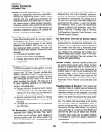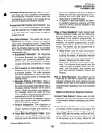
STRATA DK
GENERAL DESCRIPTION
DECEMBER 1990
data equipment, including personal computers,
printers, and modems. Asynchronous data can
t%?ransmitted at speeds up to 19.2 kpbs. The
system allows personal computer (PC) key-
board dialing (up to 9600 bps) using the AT
command set. When used in conjunction with
PC desk top software, dial-by-name and other
dial directories may be set up inside the PC.
The system provides four data security groups
to restrict data calls between groups. The sys-
tem also provides program options to allow
modems to be used in pooling groups.
DAY/NIGHT Modes: The system has three
available modes, DAY, DAY2 and NIGHT.
Each mode can be assigned a distinct CO-to-
station ringing arrangement for handling calls
differently. The system can be programmed
with either two or three modes (which can be
changed by any station programmed with a
q
button):
Two modes:
Three modes:
DAY
DAY
NIGHT
DAY2
NIGHT
Delayed Ringing: If a CO line call rings to a sta-
tion and is not answered, alternate stations
can be programmed to ring 12 or 24 seconds
later. Twelve seconds is approximately 3 rings;
24 seconds, 6 rings. Delayed ringing is selec-
tively provided for each line, by each station.
Direct Inward System Access: Using a DTMF
telephone, outside callers can dial internal sta-
tions (DISC) or outgoing CO lines directly,
without going through a receptionist or opera-
tor. Any number of CO lines can be pro-
grammed with the direct inward system access
(DISA) feature.
l
The caller dials the DISA CO line number
and hears ringing. Then, a tone sounds for
nine seconds. While the tone is sounding,
the caller may dial a station number or out-
going CO line access code. If a busy sta-
tion is dialed, the caller can dial another
station. If no number is dialed and the
nine-second interval elapses, the call is
transferred to a pre-assigned ringing
arrangement.
l
If set in program memory, an optional
security code must be dialed to make
DISA calls throtigh the system via CO
lines, but is never required to dial internal
stations directly. The DISA security code (1
u 15 digits) may be set, changed, or can-
celed from system programming and/or
designated stations. If the DISA security
code is not set in memory, it is not neces-
sary for dialing out on CO lines via DISA.
l
A built-in 4-minute timer automatically dis-
connects DISA calls in situations where
the central office does not provide a
release signal. After a warning tone, this
timer can be reset by the caller dialing B to
extend the call another four minutes as
many times as required to finish the call.
This timer is always operational during
DISA calls to prevent CO line lock-up.
l
A CRCU PC6 must be installed on the
PCTU PCB to allow DISA operation.
l
A DISA CO line can be assigned to any
Night Transfer ringing mode, allowing CO
lines to ring normally in one mode (i.e.
DAY) and become DISA lines when the
system is transferred to another mode (see
DAY/NIGHT Modes).
l
DISA CO line calls have complete system
privacy and cannot be overridden.
l
The system provides DISA class of serv-
ice, which allows Toll Restriction to be
applied to DISA CO line calls.
Distinctive CO Line/Intercom Ringing+: When
CO and intercom calls ring a station, the ring-
ing is different. This helps the user determine
the type of each incoming call before answer-
ing. (This feature is optional for single-line tele-
phones and standard for digital and electronic
telephones.)
l
A further distinction is available for elec-
tronic telephones as a station feature.
Stations in close proximity may be pro-
grammed for a unique ring on incoming
CO calls. This allows individual station
users to recognize their telephone’s ring-
ing. See Station Features, Distinctive
Station Ringing.
*Available using standard or electronic telephones.
-32-



